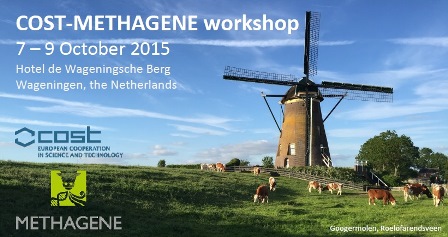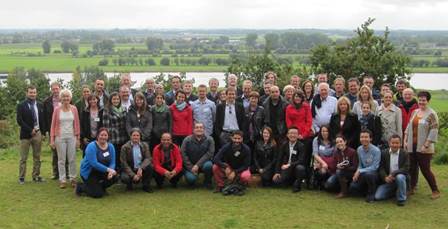 Large-scale methane measurements on individual ruminants for genetic evaluations
Large-scale methane measurements on individual ruminants for genetic evaluations
Annual METHAGENE Workshop - Wageningen, NL
From October 7 to 9, 2015, 58 researchers from across Europe came together during the METHAGENE workshop to connect their work related to measuring and analysing large scale individual methane emissions, and to discuss next steps. The meeting took place in Wageningen, the Netherlands.
The success of the METHAGENE network is still that it unites researchers from across Europe to work on new solutions in breeding for low–emitting ruminants. The METHAGENE consortium was pleased to be able to welcome new researchers to this Workshop. The network is continuously growing in number and geographically, especially with researchers from Central European states.
Bringing together as much research on methane emissions by individual ruminants as possible is necessary to realise a critical mass that is needed to find genetic–based differences in ruminants’ emissions. This data can provide new solutions for breeding programmes that select on low–methane emitting animals and reduce the carbon footprint of livestock.
Presentations of the meeting can be found on this page (password-protected, for the password please contact Yvette.deHaas@wur.nl).
General:
(password protected)Key notes:
(password protected)Updates from field:
(password protected)Poster pitches:
(password protected)Working groups:
(password protected)


